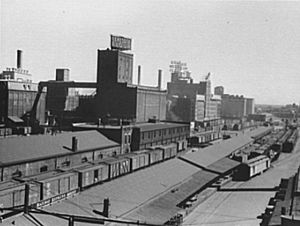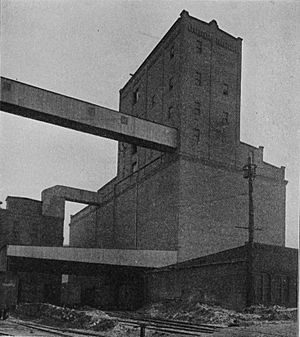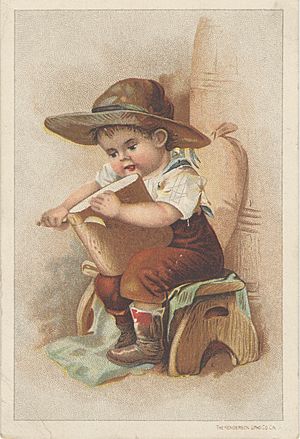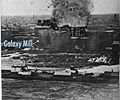Northwestern Consolidated Milling Company facts for kids
The Northwestern Consolidated Milling Company was an American company that made flour. It was a very big deal in Minneapolis when that city was known as the "flour milling capital of the world." Northwestern made flour for about 60 years, from 1891 to 1953.
When it first started, Northwestern was the second largest flour milling company in Minneapolis and the world, right after Pillsbury. Another big company, which is now General Mills, was a close third. Northwestern was part of a group of companies in Minneapolis that, by 1905, owned almost 9% of all the flour and grain products made in the country. This group of companies was so powerful that they were almost like a monopoly (when one company controls everything) or an oligopoly (when a few companies control everything).
Contents
History of Flour Power
By the 1880s, flour milling had already made big steps forward with new machines and ways of working. At that time, 18 different companies were making flour in Minneapolis. For the next 50 years, the biggest changes in the flour business were companies joining together or changing how they were run.
Northwestern Consolidated Milling Company started in July 1891. A group of business people, led by a former lumberman named John Martin, brought together six existing flour mills. These mills included the Crown Roller, Columbia, Northwestern, Pettit, Galaxy, and Zenith. Together, these mills could make a lot of flour every day.
John Martin became the president of the new company. Northwestern also launched a new flour brand called Ceresota. Over time, the company grew to own nine mills and several large storage buildings for grain.
Early Challenges and Big Changes
Northwestern had some money troubles in its first ten years. The people who started it paid too much for the mills and didn't have enough money to keep things running smoothly. So, in 1895, they had to reorganize the company to fix these problems.
Around 1899-1900, a company called United States Milling Company formed in New York City. Their big goal was to become a flour monopoly by buying almost all the mills that ground spring wheat. But Northwestern was the only company they managed to buy. United States Milling Company also ran into money problems. In 1900, it reorganized and became the Standard Milling Company, with Northwestern as one of its smaller parts.
When Northwestern first started, it was the second largest flour company in the world. Only Pillsbury-Washburn was bigger, and Washburn, Crosby (which later became General Mills) was just a little smaller. By 1900, these three companies were so big that they controlled 97% of the flour market in Minneapolis! In 1928, Washburn, Crosby joined with other U.S. millers and became General Mills. This made General Mills the world's largest flour milling company, even bigger than Pillsbury. Later on, General Mills even bought Pillsbury.
The Million Bushel Elevator
In January 1909, Northwestern opened its amazing Elevator A. This was possibly the largest grain elevator ever built using brick. It could hold a massive 1,000,000 bushels of grain! Its conveyor belts could move 10,000 bushels of grain every hour to the nearby Crown Roller and Standard mills.
Elevator A, along with Elevator B (which was also known as the Pettit Mill, and only its foundation remains), is an important historical site. They are part of the Saint Anthony Falls History District, which was added to the National Register of Historic Places in 1971.
Northwestern Today

Over time, the main place for flour milling in the U.S. moved to the East Coast. Because of this, Northwestern's A and F Mills closed in the 1940s and 1950s. Out of the 34 flour mills that used to be in Minneapolis, only four are still standing on the west side of the Mississippi River. Two of these, the Crown Roller Mill and the Standard Mill, were once Northwestern mills.
Today, Elevator A is known as the Ceresota Building and is used as an office building. The Crown Roller Mill is also an office building. The Standard Mill became a hotel, but it is now closed. The Ceresota flour brand is still around, but it's now owned by The Uhlmann Company and American Home Foods.
The Ceresota Brand Story
The company named its famous Ceresota Flour after a made-up son of the Greek goddess Ceres. They called him Ceres Ota. The advertisements told a fun story about a young boy exploring the world in a special outfit made of gifts from different countries. For example, an Egyptian king gave him his pants, Italy gave him a blue blanket, and a miller gave him his brown hat. Every sack of Ceresota Flour showed a picture of Ceres Ota slicing a huge loaf of bread.
Images for kids











